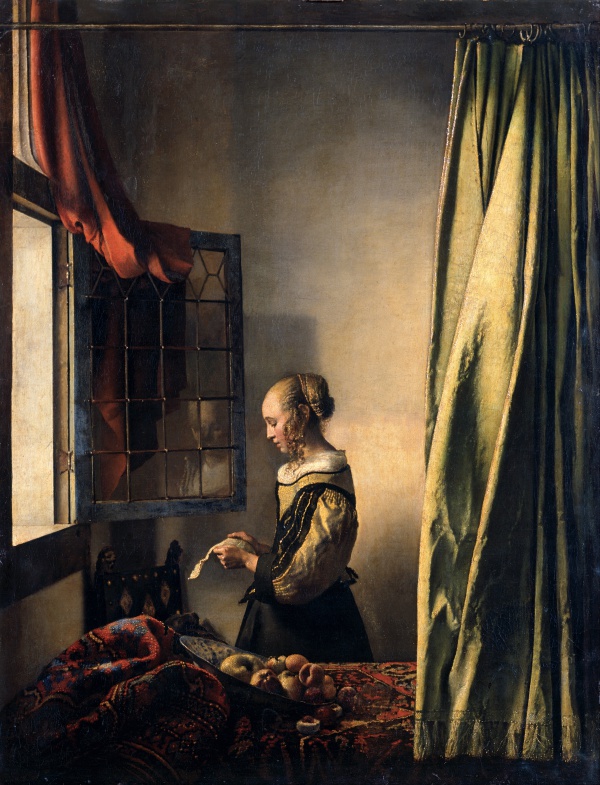Facts About Girl Reading a Letter at an Open Window
"Girl Reading a Letter at an Open Window" is a stunning oil painting by Johannes Vermeer, one of the preeminent artists of the Dutch Golden Age. Created around 1657–59, this artwork depicts a young Dutch woman engrossed in reading a letter next to an open window.
For many years, the painting was erroneously attributed to other artists, including Rembrandt and Pieter de Hooch. It wasn't until 1880 that it was correctly identified as a Vermeer. The painting's journey didn't end there; after World War II, it briefly surfaced in the Soviet Union before being returned to Germany.
The scene features a young, blonde woman standing by an open window, surrounded by symbolic elements such as fruit and draperies. The open window is thought to represent her desire to explore new horizons, while the fruit may hint at extramarital affairs. Vermeer's masterful technique is evident in his use of light and the repoussoir device, which adds depth to the composition. There is also speculation that he may have used optical instruments to achieve such precision.
The painting's history is captivating. It survived misattribution and the turmoil of World War II, only to be safely returned to Germany. In 1968, an analysis of the materials confirmed Vermeer's typical use of Baroque-period pigments.
This painting has left a lasting legacy, inspiring artists like Tom Hunter, who created a photographic interpretation echoing its emotional tone. Today, "Girl Reading a Letter at an Open Window" is proudly displayed at the Gemäldegalerie in Dresden, where it continues to captivate viewers with its intricate details and rich symbolism.

 Austria
Austria